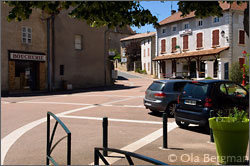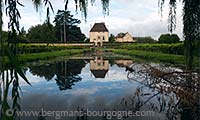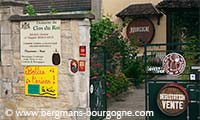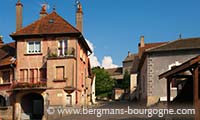
iré-Clessé, it might look like another two-part appellation name in Burgundy. This fairly young appellation in the Mâconnais is not the result of a village adding its most prestigious vineyard to its name. This is the result of two neighbouring villages – Viré and Clessé – sharing very similar soils.
When the appellations were handed out in the 1930's the winegrowers in this neck of the woods said "thanks, but no thanks". The reason was the same as when Pommard said no to grand crus; the taxes. Moving up the ladder in the appellation hierarchy would have meant higher costs. And since the wines were selling well anyway the winegrowers in Viré and Clessé at the time saw no reason to apply for a village appellation.
You'll find the two villages of Viré and Clessé just northwest of Mâcon. Up until 1997 this was Mâcon-Villages country. It would actually take the winegrowers 60 years to get back on track. A first attempt was made in 1963 when Viré applied for a village appellation. The surface area included was only 120 hectares – Viré and part of Quintaine, the hamlet halfway between Viré and Clessé – but the application was turned down by the INAO (Institut National des Appellations d'Origine) with reference to the limited size. Another ten years down the line a new attempt was made – the outcome was the same, but for a different reason. This time the application included 17 communes and covered a total of 1170 hectares, but in the eyes of the INAO this was too much.
 In the late 1980's/early 1990's the winegrowers in both Viré and Clessé re-launched the idea of a new village appellation. As the work progressed the idea of having separate appellations for the two villages was abandoned. Instead, a joint application was produced. There are many similarities between Viré and Clessé – they are only seven kilometers apart on the same slope, the soil is very similar, the exposition is more or less the same and they both are entirely devoted to growing chardonnay.
In the late 1980's/early 1990's the winegrowers in both Viré and Clessé re-launched the idea of a new village appellation. As the work progressed the idea of having separate appellations for the two villages was abandoned. Instead, a joint application was produced. There are many similarities between Viré and Clessé – they are only seven kilometers apart on the same slope, the soil is very similar, the exposition is more or less the same and they both are entirely devoted to growing chardonnay.
The appellation that was created in 1997 – Viré-Clessé – covers four communes. From north to south they are Montbellet, Viré, Clessé and Laizé. This is very much like a miniature Côte d'Or in the sense that it is a single slope with the villages nicely lined up with the road down below linking them together. The whole slope benefits from a southeast exposition not very far from the Saône.
Sweet wines have a very limited place in Burgundy, but here they have a sort of sanctuary. The production is still limited and the wines don't fit into the appellation system. They are rather tolerated than approved. There is for instance the Viré-Clessé Vendange d'Exception du Terroir from Domaine Jean-Pierre Michel and the Mâcon-Villages Cuvée Botrytis from Domaine de la Bongran.
 Sweet wines have a very limited place in Burgundy, but here they have a sort of sanctuary. The production is still limited and the wines don't fit into the appellation system. They are rather tolerated than approved. There is for instance the Viré-Clessé Vendange d'Exception du Terroir from Domaine Jean-Pierre Michel and the Mâcon-Clessé Cuvée Botrytis from Domaine de la Bongran. The volumes produced by each domaine are tiny.
Sweet wines have a very limited place in Burgundy, but here they have a sort of sanctuary. The production is still limited and the wines don't fit into the appellation system. They are rather tolerated than approved. There is for instance the Viré-Clessé Vendange d'Exception du Terroir from Domaine Jean-Pierre Michel and the Mâcon-Clessé Cuvée Botrytis from Domaine de la Bongran. The volumes produced by each domaine are tiny.
The wines can be made both from botrytised grapes – grapes affected by noble rot – and from grapes that have been passerillés, left on the vines to over-ripen and dry out. In the former case the levels of residual sugar will be over 60 g/l. In the latter it will be less than 30 g/l.
– Our Vendange Tardive is from Viré-Clessé vineyards in the south of the village of Viré, explains Jean-Marie Chaland at Domaine Sainte Barbe in Viré. The vineyard is on the rocks with a steep slope to give less water for ripeness and to get low growing power. This to get the better conditions for the development of the noble rot, the botrytis. We pick in November and produce around 1500 50 cl bottles. The wine is aged in old oak barrels, the wine making process is natural and the sugar level is 50 g/l with 13,5 % of alcohol.
But as said this is an appellation domainated by dry wines, dry white wines made from chardonnay grapes. Up-slope you'll find the vines producing Viré-Clessé wines. Down below are the vines for Mâcon-Villages.
© 2013 Ola Bergman













